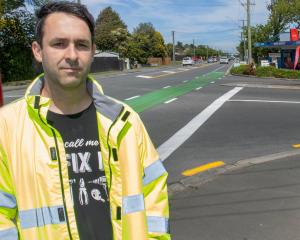
Nationwide, brigades are making operational changes to ensure there is no disruption to services while making sure Omicron doesn’t spread through the stations.
Some brigades are splitting into two groups, but for the Governors Bay Volunteer Fire Brigade, this is not an option. Chief Andrew Norris said splitting his crew in half would not work because the crew see each other daily.
“For some brigades where the members live separate lifestyles and have different circles it will work, but for half our crew, they’re meeting everywhere else so splitting them at the station is just not really effective.’’

Diamond Harbour now has two teams, one on day shifts and one on night shifts, and the crews are encouraged not to mix outside of their groups.
“It’s actually quite stressful because it means that during the day and the night you have only half of your brigade that you can use and sometimes some of them are away or unwell so a bit of pressure on the troopies at the moment,” Palmer said.
The Diamond Harbour brigade has a pool of about 21 firefighters. Volunteers have to ensure all their data is up to date when they are available.
“It’s quite stressful because you have to be right on the ball about who is available and who is not. It’s more of a constant thing,” Palmer said.
“There’s usually a good pool to draw from but when you’re on half that strength it becomes a bit more stressful.”
In the event of an emergency that required more numbers, Palmer said they had the option of calling on a neighbouring brigade. Or, if the whole brigade was needed, they would do their best to work separate from each other.
“We’ve just got to try and do our best to keep our team safe from infection, it’s quite a difficult thing to do but we just do the best that we can,” Palmer said.
Sumner and Lyttelton fire brigades are doing something similar.
Chief fire officer for Sumner, Daryl Sayer, has split the team in two.
Due to lower number availability during the day, the brigade cannot maintain separation for work hours call-outs.
“We ensure that precautions are taken like masking and distancing as much as possible. The down side is that half the brigade can’t train with the other half for the time being,” said Sayer.
Lyttelton Volunteer Fire Brigade has split into two teams who are taking week about with separate training, said chief fire officer Mark Buckley.













